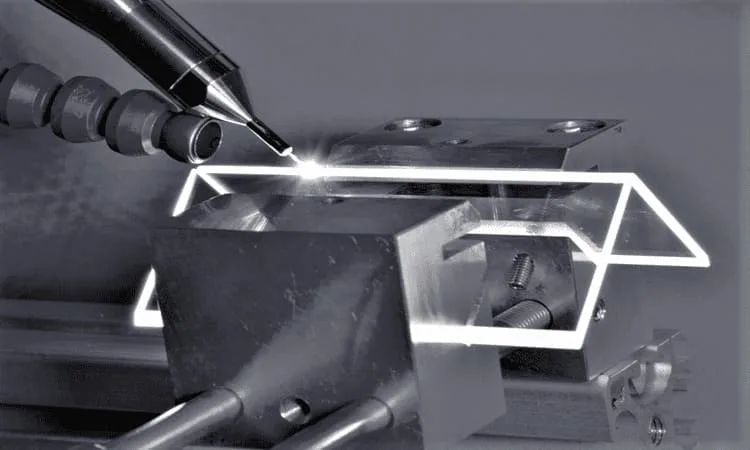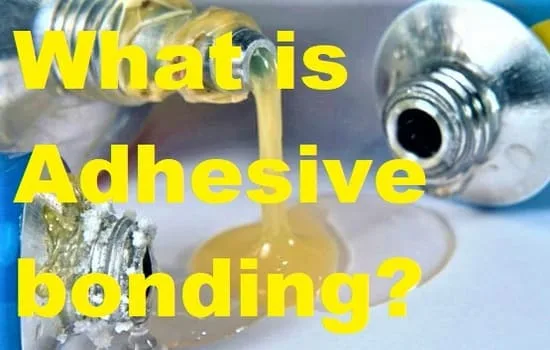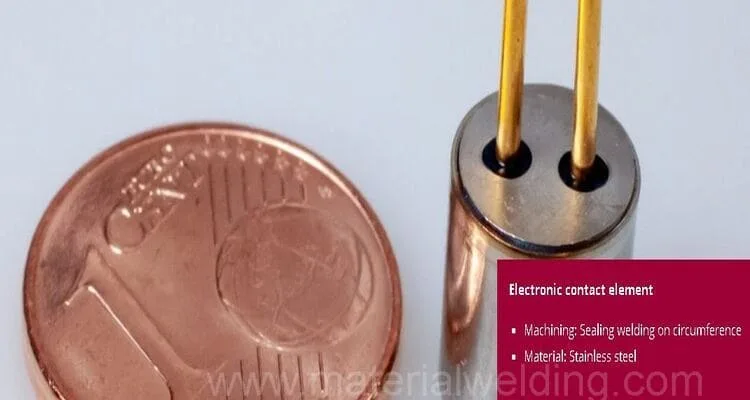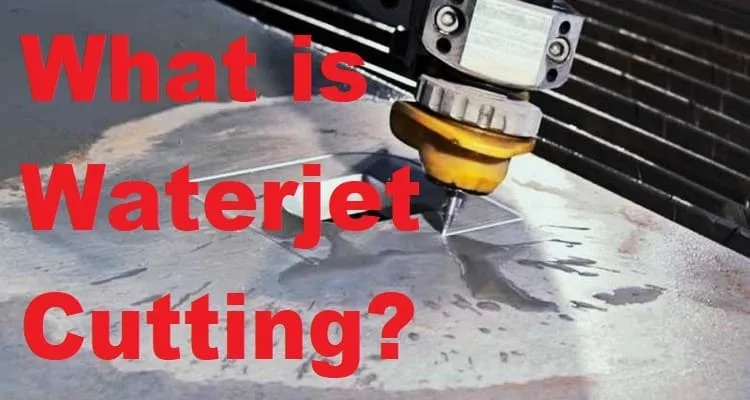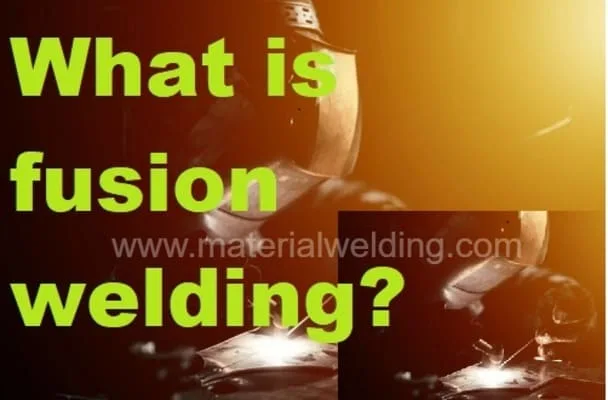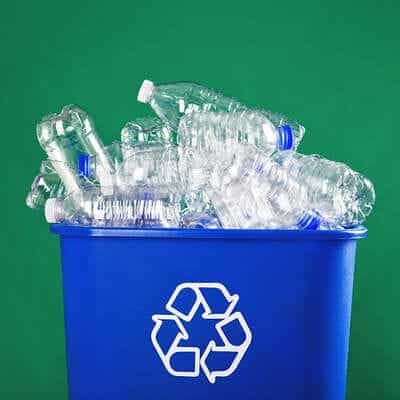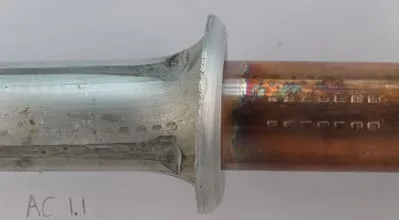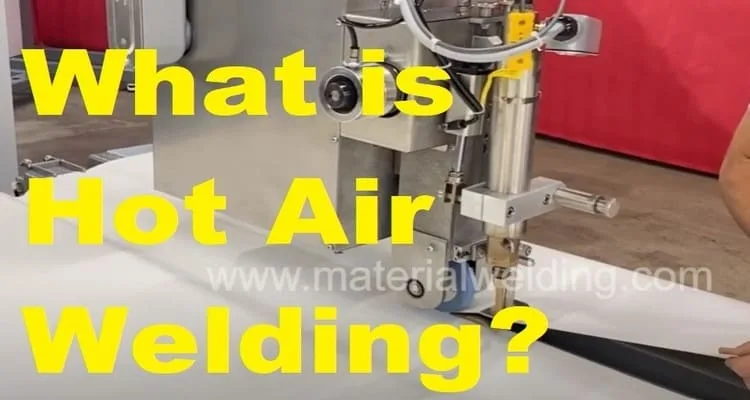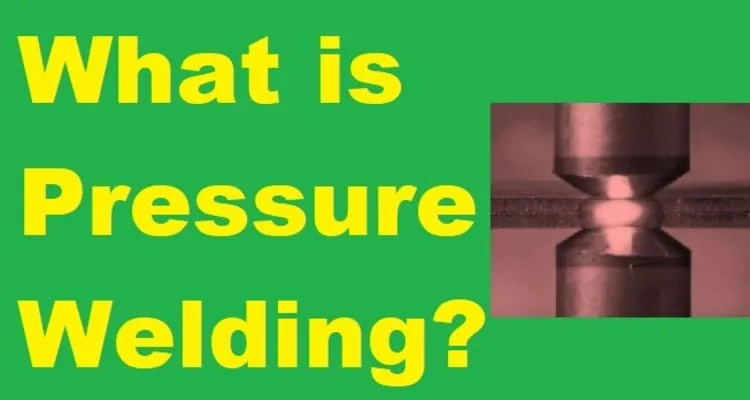Laser Welding of Plastics and polymers
Laser welding of plastics and polymers is a viable alternative to traditional plastic welding methods, such as hot air and ultrasonic welding.
Laser welding offers numerous advantages over these methods, including higher precision, faster speeds, narrow heat affected zone and improved joint strength.
When laser welding plastics or polymers, the material is exposed to high energy from a laser beam which melts it at the point of contact.
The melted material then forms a weld joint when it cools down. This process does not require any fasteners or adhesives for joining materials together, making it cost-effective with minimal waste generation.
Additionally, it leaves minimal or no trace marks on the part surface after completion of the process due to its localized nature. Its excellent accuracy also allows for intricate designs to be produced with ease that would normally be impossible using other methods.
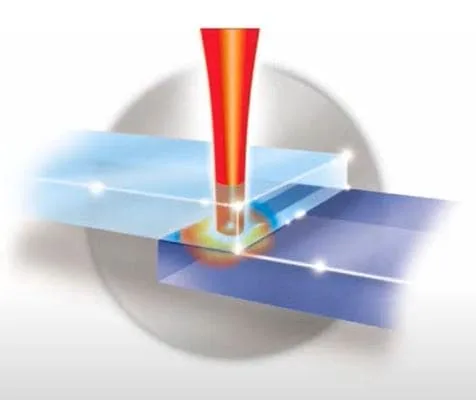
Welding with laser radiation, as opposed to welding with light and IR radiation, allows you to get very high degrees of concentration heat energy in the welding zone.
With this concentrated energy beam, the welding of plastics can be performed both in continuous and pulsed radiation laser welding modes. Continuous welding mode is more widely used for plastic welding.
Read more: How plastic is Made & Types of Plastics?
Plastic Laser Welding
Laser welding of plastics uses the heat from a laser beam to permanently join two pieces of plastic together.
Before welding, the two pieces of plastic must be pressed tightly with an external force and adjust the wavelength of the laser, which is best absorbed by the plastic.
The laser will then pass through the first piece of plastic and then be absorbed by the second piece of plastic and turned into thermal energy. Thus, the contact surface of these two pieces of plastic will melt and become a welding zone, and welding work will be achieved.
Laser welding of plastics is characterized by high efficiency, full automation, high precision, excellent sealing of the weld and minor damage to the plastic. At the same time, it does not produce any noise and dust, which makes it a very ideal method of welding plastics.
Uses of Laser Welding for Plastic Joining
Theoretically, laser welding of plastics can be applied in all industries related to the connection of plastics asthma. Currently, laser welding of plastics is mainly used in plastic industries such as automotive, medical equipment, home appliances and consumer electronics.
Read more: How to Weld Plastic?
From the point of view of the automotive industry, laser plastic welding technology is often used to weld the car dashboard, car radar, automatic lock, car light and so on.
As for medical equipment, laser plastic welding can be used in medical hose, blood test, hearing aid, liquid filter tank and other sealing welds requiring a high level of cleanliness.
As for consumer electronics, laser plastic welding can be used in mobile phone body, earphone, mouse, sensor, mouse and so on.
Thermoplastic laser welding process
When welding a thermoplastic with a laser beam, the heating of the connected surfaces is achieved as a result of the conversion of the laser beam energy into thermal energy at the point of focusing the beam.
The energy of photons can be absorbed by matter, which leads to an increase in temperature at the irradiated point. This property is the basis for the use of lasers for welding and cutting materials.
The ability to focus the laser beam into a narrow beam with special optical devices makes it possible to obtain a very large energy density, sufficient to heat the surface of the thermoplastic to the melting point almost instantaneously.
Laser welding of plastic films
The release of a large amount of energy on a small surface indicates the feasibility of using lasers for welding thin films at high welding speeds. For example, films made of low-density polyethylene thickness of 50-150 μm is welded with a CO2 Laser at a speed of 3.3-4 m / s. However, the efficiency of the process is low, since the film absorbs only 20-25% of the laser energy.
When welding with laser radiation, gas CO2 lasers with a wavelength of 10.6 μm, designed for continuous operation and having a power of 25 – 80 W, as well as lasers with pulsed operation and with an average capacity of 2 kW.
In recent years, CO2 laser has been used to cut thermoplastics and cutting synthetic fabrics, knitwear, artificial leather, etc. the average cutting speed is 1 m/s and depends on the number of layers of material, its properties and beam power.
The advantages of laser welding and thermoplastic cutting are high productivity and process automation. However, there are also disadvantages that hinder the practical application of this method: the high cost and complexity of the equipment.
Laser welding vs Laser cladding
Laser welding and laser cladding are two specialized methods used to join materials together.
Laser welding is a process that uses a focused laser beam to create high-heat temperatures capable of melting the base material in order to facilitate the joining of two separate parts.
t is capable of producing high quality welds with minimal thermal distortion, making it ideal for precision joining in medical and automotive industries.
Read more: Ultrasonic Plastic Welding Process.
On the other hand, laser cladding is a process that uses lasers to deposit additional layer material onto surfaces to enhance their properties, such as corrosion resistance or wear resistance. The material can also be used to repair worn components or restore damaged parts.
Laser cladding is a more complex process, involving the use of a laser beam and powdered material, which is melted and fused onto the surface of one of the components.
Laser Welding vs MIG Welding
Laser welding offers several advantages over MIG welding, including higher weld speed, greater precision and improved appearance of the finished welds. This makes laser welding ideal for applications where precise welds are required.
MIG Welding is popular because of its low cost and ease of use. It also produces deep penetration into thick materials which makes it suitable for thicker joints and assemblies.
However, due to the large amount of heat generated with this method, it may produce warping or distortion on thinner material which can be difficult to correct after the fact.
Additionally, it is not as precise as laser welding which can create problems when attempting to create intricate shapes or designs on a part or assembly.
Advantages and disadvantages of Laser Welding
Laser welding is an advanced and precise welding method used in industries all around the world. From automotive to medical, laser welding can provide powerful advantages over traditional welding methods.
However, understanding the pros and cons of laser welding is essential to making informed decisions when considering investments in laser technology.
On the pro side of things, laser welds are incredibly precise and repeatable with very little distortion or heat-affected zone. Laser welds also produce cleaner seams than traditional methods, meaning less post-welding cleanup is necessary.
In addition, laser welders are extremely versatile when it comes to different materials and thicknesses which makes them suitable for a wide range of applications from sheet metal fabrication to aerospace manufacturing.
On the flipside, there are some drawbacks associated with using lasers for welding applications.
A brief summary of Advantages and disadvantages of Laser Welding are listed below:
| Advantages | Disadvantages |
| Quality (imperceptible seam) | Limited materials used |
| No mechanical load | The need for eye protection |
| Greater adaptability and possibility of integration into production | Inability to automate the process |
| Accuracy and reproducibility | — |
FAQS
Does laser welding use filler?
Filler material is an integral part of many traditional welding processes such as arc welding, but it’s not required for laser welding. Hybrid laser welding such hybrid MIG welding uses filler material.
Laser used for laser cladding also need filler material either in wire form or powder form.
Is laser welding expensive?
Generally speaking, it can be more expensive than other traditional forms of welding such as arc or gas depending on what is being welded and how many parts need to be joined together.
Additionally, factors like access to power supply and overall size also affect pricing since they require specialized equipment that increases labor costs.
On average, purchasing a laser welder will start at around $5,000 USD but high-end models can cost up to $20,000 USD or even more depending on wattage requirements.
What plastics can be welded?
1. Polyethylene (high and low density),
2. Polypropylene,
3. PVC,
4. Polystyrene,
5. Polyvinyl acetate,
6. Polyethylene terephthalade,
7. Polycarbonate,
8. Nylon.
Laser welding machine for plastic cost
Machines with higher power outputs tend to be significantly more expensive than basic models.
Additionally, many manufacturers offer additional accessories that can add even more costs.
